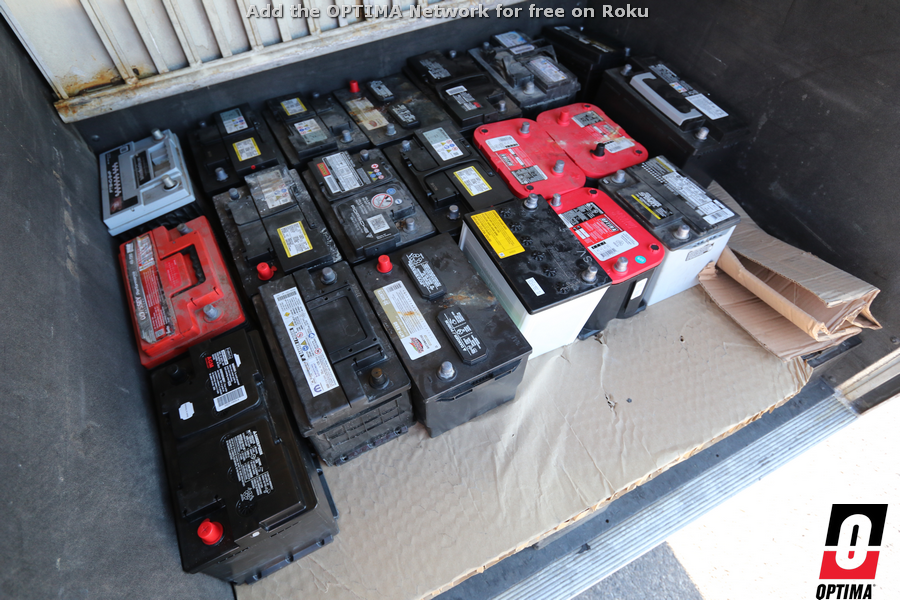Can We Use a Discharged Battery to Start a Car Engine?

Tips & Support
- Sponsor
- OPTIMA Batteries
- Location
- Glendale, WI


If a car battery is discharged, it probably lacks the starting power to turn over an engine and start a car. That doesn't mean the battery cannot be recharged and used to start an engine, but that it likely needs to be fully-recharged first. Fully-charged, most car batteries will measure at least 12.6 volts when fully-charged. Depending on the depth of discharged and the rate of charging, it could take several hours to several days to fully-recharge a car battery.
For instance, a Group 34 OPTIMA REDTOP is a 50 amp hour battery. If it is completely discharged and a 2-amp charger, like the OPTIMA D200+ battery maintainer is used to recharge it, the REDTOP may need more than 24 hours (50Ah/2-amp charger) to fully-recharge. However, if a 12-amp charger, like the 1200-series OPTIMA Charger, the battery could be fully-recharged in about four to five hours (50Ah/12-amp charger). A jump box or set of jumper cables might be able to get an engine started much sooner, but the battery in the car will still be deeply-discharged and should be fully-recharged with a battery charger as soon as possible. Alternators are designed to maintain batteries near a full state of charge, not recover deeply-discharged batteries.
Charging the battery is only part of the solution. Understanding how the battery became deeply-discharged will help prevent it from happening again in the future. If a door was left open or lights were left on, that's an easy fix. However, if the battery became deeply-discharged as the car sat, then some more research may be needed. Many newer cars have very high electrical demands, even when they aren't running and could deeply-discharge a battery in a few weeks time, if the vehicle isn't driven regularly. In other instances, aftermarket accessories like a car alarm, dash cam or stereo system may be drawing current when the engine isn't running.
In either case, supplemental and periodic charging with a quality battery charger may be needed to ensure voltage is properly-maintained and the battery is ready to start a car, when needed. Start by checking voltage once a month on your vehicle. If the voltage isn't close to or above 12.6 volts after sitting overnight, putting the battery on a charger overnight is a good idea. If the voltage checks out fine, you can move that back to every six to eight weeks, until you find the right cadence.
If the battery measures significantly below 12.6 volts, then more frequent charging may be needed. The battery may also need a load test, which most battery professionals will do for free. If the battery passes a load test, a mechanic may need to measure the parasitic draw on the battery and address electrical draws that might be deeply-discharging the battery.
The good news in all of this is that OPTIMA's 400 and 1200-series chargers can both measure battery voltage and keep batteries-fully-charged with one-touch functionality.
For instance, a Group 34 OPTIMA REDTOP is a 50 amp hour battery. If it is completely discharged and a 2-amp charger, like the OPTIMA D200+ battery maintainer is used to recharge it, the REDTOP may need more than 24 hours (50Ah/2-amp charger) to fully-recharge. However, if a 12-amp charger, like the 1200-series OPTIMA Charger, the battery could be fully-recharged in about four to five hours (50Ah/12-amp charger). A jump box or set of jumper cables might be able to get an engine started much sooner, but the battery in the car will still be deeply-discharged and should be fully-recharged with a battery charger as soon as possible. Alternators are designed to maintain batteries near a full state of charge, not recover deeply-discharged batteries.
Charging the battery is only part of the solution. Understanding how the battery became deeply-discharged will help prevent it from happening again in the future. If a door was left open or lights were left on, that's an easy fix. However, if the battery became deeply-discharged as the car sat, then some more research may be needed. Many newer cars have very high electrical demands, even when they aren't running and could deeply-discharge a battery in a few weeks time, if the vehicle isn't driven regularly. In other instances, aftermarket accessories like a car alarm, dash cam or stereo system may be drawing current when the engine isn't running.
In either case, supplemental and periodic charging with a quality battery charger may be needed to ensure voltage is properly-maintained and the battery is ready to start a car, when needed. Start by checking voltage once a month on your vehicle. If the voltage isn't close to or above 12.6 volts after sitting overnight, putting the battery on a charger overnight is a good idea. If the voltage checks out fine, you can move that back to every six to eight weeks, until you find the right cadence.
If the battery measures significantly below 12.6 volts, then more frequent charging may be needed. The battery may also need a load test, which most battery professionals will do for free. If the battery passes a load test, a mechanic may need to measure the parasitic draw on the battery and address electrical draws that might be deeply-discharging the battery.
The good news in all of this is that OPTIMA's 400 and 1200-series chargers can both measure battery voltage and keep batteries-fully-charged with one-touch functionality.
